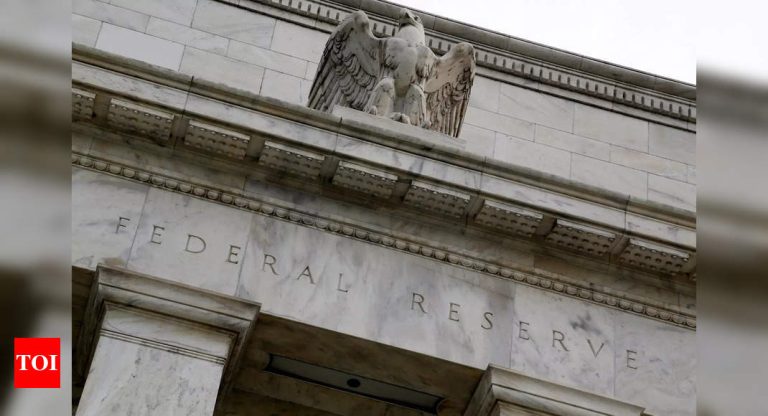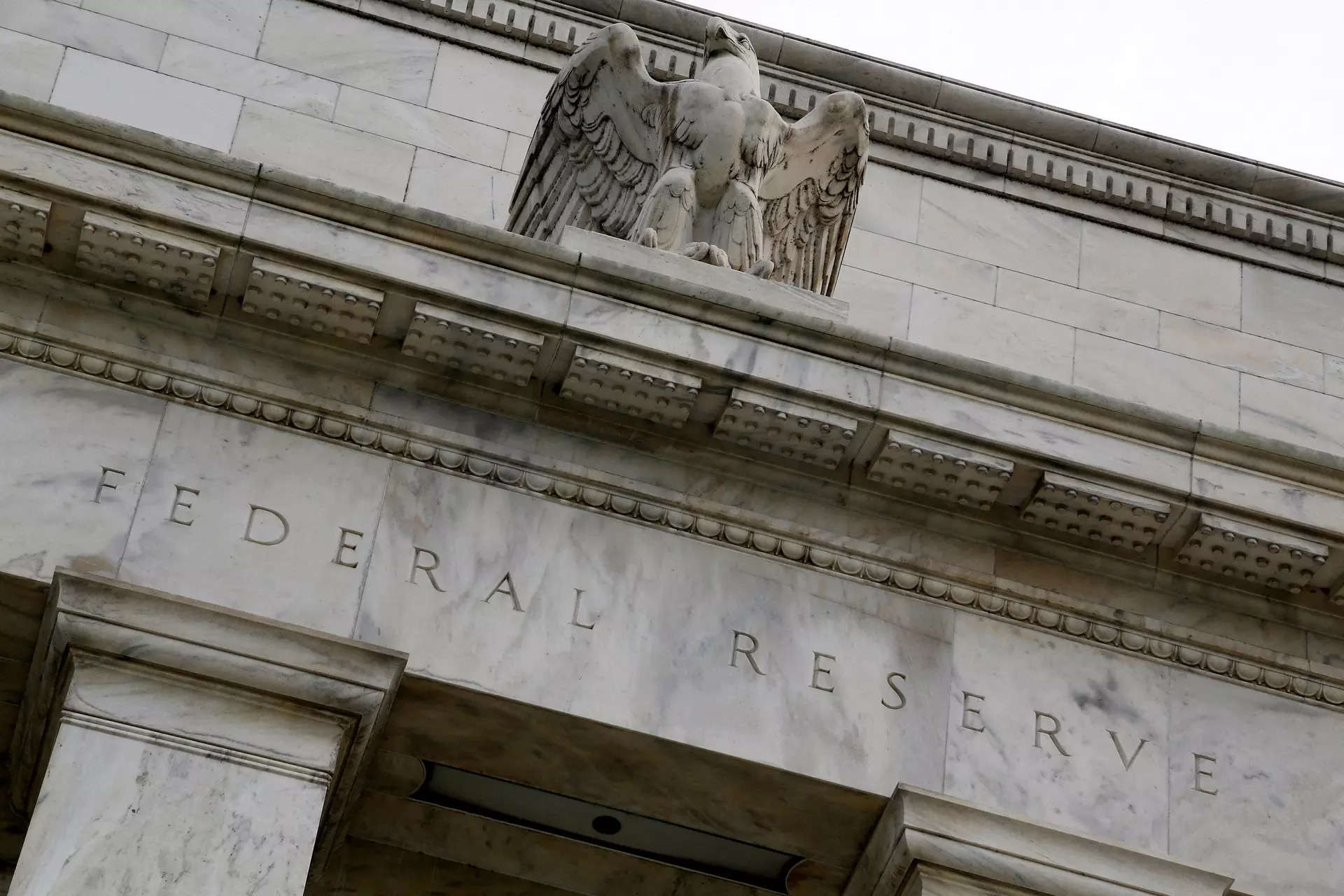WASHINGTON: The US Federal Reserve voted Wednesday to hold interest rate has A peak for 22 years for the second consecutive meeting, as it strives to slow stubborn inflation without harming the strength of the economy.
THE fedThe central bank’s decision to keep its policy rate between 5.25 percent and 5.50 percent gives policymakers time to « evaluate additional information and its implications for monetary policy, » the central bank said in a press release.
The Fed’s goal in holding these rates is to calm demand, hoping to encourage businesses to slow their price increases. Despite the economy’s recent resilience, with particularly robust growth this summer, inflation has gradually declined since its 2022 peak, falling to 3.4% in September from more than 7%.
Federal Reserve policymakers are now focused on returning inflation to the central bank’s 2% target. The combination of economic strength and moderating inflation has given them hope of a relatively smooth « soft landing » in which the economy gradually calms down without significant disruptions.
A central question facing Fed officials is whether they will need to implement one final rate hike in the coming months, a possibility they have not ruled out. In its post-meeting statement, the Fed emphasized that it takes into account factors such as cumulative monetary policy tightening, the time it takes for such policy changes to impact the economy and various developments economic and financial.
At their previous meeting in September, policymakers predicted that an additional quarter-point increase in rates would likely be needed by the end of 2023. However, they did not provide updated economic projections at the time. of this meeting, with the next set scheduled to be released after the end of 2023. Fed meeting in December. Conditions have changed, notably due to a notable increase in long-term interest rates on financial markets. While the Fed manages short-term borrowing costs, long-term rates adjust with a delay for a variety of reasons. The recent rise in these rates has made mortgages and corporate debt more expensive, potentially helping to cool the economy and reducing the need for further rate hikes.
The Fed acknowledged that tightening financial and credit conditions for households and businesses would likely have a dampening effect on economic activity, hiring and inflation.
Jerome Powell, the Fed Chairman, was scheduled to hold a news conference, where he could offer additional insight into how the Fed assesses rising long-term rates alongside recent signs of a robust economy.
Although the Fed’s actions have had some impact on sectors like the housing market, the labor market has continued to show resilience. Hiring has slowed but remains faster than pre-pandemic levels, and wage growth, while slowing, remains above pre-2020 rates.
As Americans get jobs and wage increases, they continue to spend, often exceeding economists’ expectations, resulting in faster overall growth than initially expected a year and a half after the Fed’s efforts began. to curb inflation.
In their statement, Fed officials upgraded their assessment of the economy, describing it as expanding at a « strong » pace, a change from the previous characterization of « strong. »
Current economic strength presents a potential challenge for central bankers if it persists. If consumers maintain strong demand for goods and services, businesses could continue to raise prices, making it harder to eliminate the vestiges of rapid inflation. Therefore, policymakers closely monitor the dynamics of the economy when deliberating their future policy decisions.
At the same time, the Fed is careful not to apply the brakes too hard, as that could risk pushing the economy into a recession when it may not be necessary. Policy changes often have delayed effects, and it can take months for the full impact of interest rate increases to materialize.
(With contribution from agencies)
THE fedThe central bank’s decision to keep its policy rate between 5.25 percent and 5.50 percent gives policymakers time to « evaluate additional information and its implications for monetary policy, » the central bank said in a press release.
The Fed’s goal in holding these rates is to calm demand, hoping to encourage businesses to slow their price increases. Despite the economy’s recent resilience, with particularly robust growth this summer, inflation has gradually declined since its 2022 peak, falling to 3.4% in September from more than 7%.
Federal Reserve policymakers are now focused on returning inflation to the central bank’s 2% target. The combination of economic strength and moderating inflation has given them hope of a relatively smooth « soft landing » in which the economy gradually calms down without significant disruptions.
A central question facing Fed officials is whether they will need to implement one final rate hike in the coming months, a possibility they have not ruled out. In its post-meeting statement, the Fed emphasized that it takes into account factors such as cumulative monetary policy tightening, the time it takes for such policy changes to impact the economy and various developments economic and financial.
At their previous meeting in September, policymakers predicted that an additional quarter-point increase in rates would likely be needed by the end of 2023. However, they did not provide updated economic projections at the time. of this meeting, with the next set scheduled to be released after the end of 2023. Fed meeting in December. Conditions have changed, notably due to a notable increase in long-term interest rates on financial markets. While the Fed manages short-term borrowing costs, long-term rates adjust with a delay for a variety of reasons. The recent rise in these rates has made mortgages and corporate debt more expensive, potentially helping to cool the economy and reducing the need for further rate hikes.
The Fed acknowledged that tightening financial and credit conditions for households and businesses would likely have a dampening effect on economic activity, hiring and inflation.
Jerome Powell, the Fed Chairman, was scheduled to hold a news conference, where he could offer additional insight into how the Fed assesses rising long-term rates alongside recent signs of a robust economy.
Although the Fed’s actions have had some impact on sectors like the housing market, the labor market has continued to show resilience. Hiring has slowed but remains faster than pre-pandemic levels, and wage growth, while slowing, remains above pre-2020 rates.
As Americans get jobs and wage increases, they continue to spend, often exceeding economists’ expectations, resulting in faster overall growth than initially expected a year and a half after the Fed’s efforts began. to curb inflation.
In their statement, Fed officials upgraded their assessment of the economy, describing it as expanding at a « strong » pace, a change from the previous characterization of « strong. »
Current economic strength presents a potential challenge for central bankers if it persists. If consumers maintain strong demand for goods and services, businesses could continue to raise prices, making it harder to eliminate the vestiges of rapid inflation. Therefore, policymakers closely monitor the dynamics of the economy when deliberating their future policy decisions.
At the same time, the Fed is careful not to apply the brakes too hard, as that could risk pushing the economy into a recession when it may not be necessary. Policy changes often have delayed effects, and it can take months for the full impact of interest rate increases to materialize.
(With contribution from agencies)




